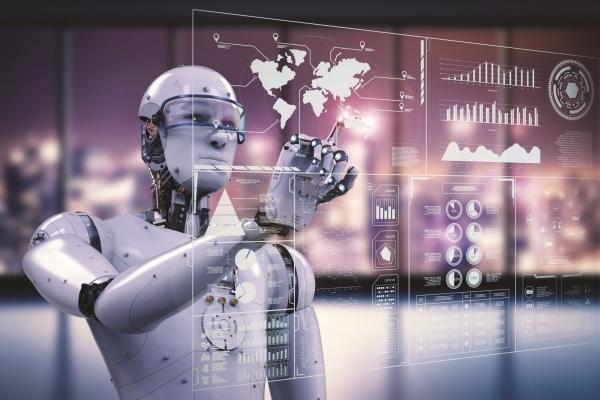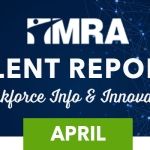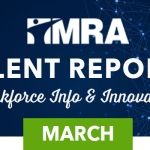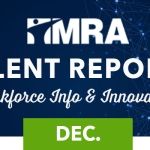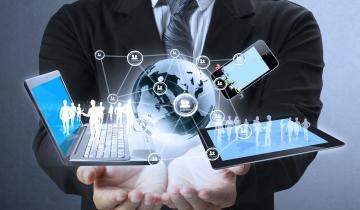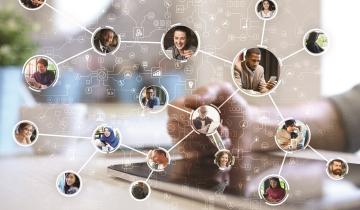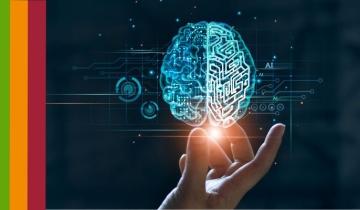Artificial intelligence (AI) seems to be everywhere these days. Whether it is used in making product recommendations based on your shopping experience, suggesting Netflix programming, or creating your grocery list using Siri, almost every aspect of our daily lives is influenced by AI.
Background
AI has been a buzzword for at least the last decade. At its core, traditional AI focuses on performing tasks accurately and efficiently based on a specific set of inputs (rules). It can learn from and make decisions based on that data. Programming supports these tools in performing specific work, but traditional AI does not create anything new.
Generative AI, however, is a powerful form of AI that not only learns from the data it collects but can also create (generate) new text outputs, images, and music. The challenge with generative AI, to use an old data-related phrase, is “garbage in, garbage out.” The work that generative AI produces is based on the data set it is using, and if that data set contains errors, the final product will be flawed. Additionally, without information related to the origin of the data AI uses to create new content, the risk of plagiarism increases significantly. In September 2023, The Authors Guild and 17 authors filed a class action lawsuit against OpenAI for copyright infringement of their fictional works that allegedly have been used to train GPT.
AI in Human Resources
A November/December 2023 Gartner article reported a survey of HR leaders who indicated their number one use of human resource-related AI was to increase efficiency related to HR administrative tasks (53%). Close behind, at 52%, was using the tools to develop job descriptions and in recruiting. Third in importance, at 51%, was the use of chatbots for service delivery to employees. Applications in learning, career development, and performance management were also identified. Incorporating AI into these processes is intended to reallocate the time HR professionals spend administering these activities toward work that has more impact on employees and the organization.
Pros of Using AI in HR
Utilizing AI in the HR function provides several benefits:
- Efficiency—An increase in efficiency and automation when used for routine tasks such as scheduling interviews and managing employee records (including onboarding tasks), benefits communications, etc.
- Streamlined recruitment processes—AI-powered processes can scan resumes, rank candidates, and conduct preliminary interviews.
- Decision making—Utilizing data-modeling tools provided by AI allows the organization to make more well-informed decisions related to staffing, training, talent management, and organizational development.
- Improved candidate experience—Incorporating AI to update candidates, answer questions through chatbots, and create a more personalized candidate experience results in a smoother and more engaging hiring process.
- Bias reduction—Provided that the AI data is valid and unbiased, using these tools can reduce human bias in the hiring process, providing a more equitable and objective selection process.
Cons of Using AI in HR
In considering the use of AI in HR, the following potential negative challenges must be considered:
- Bias and fairness issues—As mentioned above, an AI system is only as good as the data from which the system ultimately learns. As such, ensuring AI data is without bias is key in minimizing risks.
- Removing the human touch—It is easy to unintentionally remove the “human” from human resources when using these types of tools. Humans are complex beings, and relying on a computer/data-driven program to address situations that require sensitivity, empathy, and understanding does not serve employees well. When limited to transactional activities, AI can create efficiencies but cannot replace human interaction.
- Privacy and data security concerns—As we see the number of data breaches increase, the importance of protecting the data that is contained in our HRIS systems is paramount. Organizations must ensure they are protecting the data that is contained in these systems and/or their vendors are meeting these requirements.
- Overdependence on technology—CrowdStrike’s recent catastrophic events associated with a failed update is a lesson to all of us about our dependence on computer systems and AI. Organizations must ensure they have access to the needed data and processes, regardless of the status of the systems they use.
Current Legal Challenges
Not surprisingly, we are seeing challenges related to the use of AI, particularly its use in recruiting. Several cases have been settled or are in process:
- Derek Mobley v. Workday, Inc. Mobley has alleged that Workday’s online platform, which uses artificial intelligence and machine learning, discriminated against him based on race, age, and disability. Mobley claimed he unsuccessfully applied to over 100 positions using Workday’s platform. The court found that Workday’s algorithms resulted in disparate impact but did not meet the standard for disparate treatment.
- CVS Health Corporation and CVS Pharmacy. The entities reached a tentative settlement in a proposed class action lawsuit accusing the company of using software that constituted a lie-detector test when administered to candidates. The suit alleges that CVS’s use of HireVue, without allowing applicants to opt out of the process, violates Massachusetts law. The software tracks facial expressions during an interview, then based on results assigns an “employability score” to each applicant.
- The American Civil Liberties Union (ACLU) has filed a complaint with the Equal Employment Opportunity Commission (EEOC), as well as requested the Federal Trade Commission (FTC) review Aon’s use of assessment tools. The ACLU claims the tools have an underlying bias against applicants with autism or mental health disabilities and discriminate based on race.
Guidance
In 2023, the EEOC began its Artificial Intelligence and Algorithmic Fairness Initiative, in which the agency will examine how existing and developing technologies fundamentally impact the manner in which employment decisions are made. Combined with the EEOC’s 2024–2028 Strategic Enforcement Plan, the agency has made it clear that recruiting and hiring practices are a high priority and will be subject to agency scrutiny. Organizations should review this guidance to ensure they have a thorough understanding of requirements.
Employer Actions
Employers should ensure they are engaging in the needed due diligence in choosing an AI partner, or if they decide to develop their own machine learning systems. Employers may take several steps to mitigate the associated risk:
- Define the use(s) of AI in the organization. Which business needs are served and why is the use important? Why this particular tech?
- Develop a policy on the uses of AI in your workplace. Include how the data will be sourced, and used, who has access, data security, etc. Ensure everyone involved understands and is trained in their specific duties and responsibilities.
- What will your data privacy and security protocols look like? Who will be responsible for ensuring the data is kept secure and free from data breaches?
- Have a complete understanding of the data models being used. Where did the data come from, and how was it developed? Continue to monitor results to ensure no biases are evident, either implicitly or via impact.
- Revisit the processes and policies at least annually. Due to the rapid changes in AI capabilities, a review that takes place as often as needed is recommended.
AI presents both opportunities and challenges for HR departments. The key to leveraging AI effectively lies in balancing automation with the irreplaceable human elements of HR. By carefully managing the implementation of AI tools and addressing potential issues, organizations can enhance their HR functions while maintaining a focus on the human aspects that are crucial to a thriving workplace.
As AI continues to evolve, it will be important for HR professionals to stay informed about technological advancements and best practices to ensure that they can harness the benefits of AI while mitigating its drawbacks.
Looking for a deep dive into AI in HR? Our five-part On Demand webinar series, Breaking the Code: Understanding the Impact of AI on HR, covers crucial topics, including AI in recruiting, AI’s role in a flexible workforce, and more.
